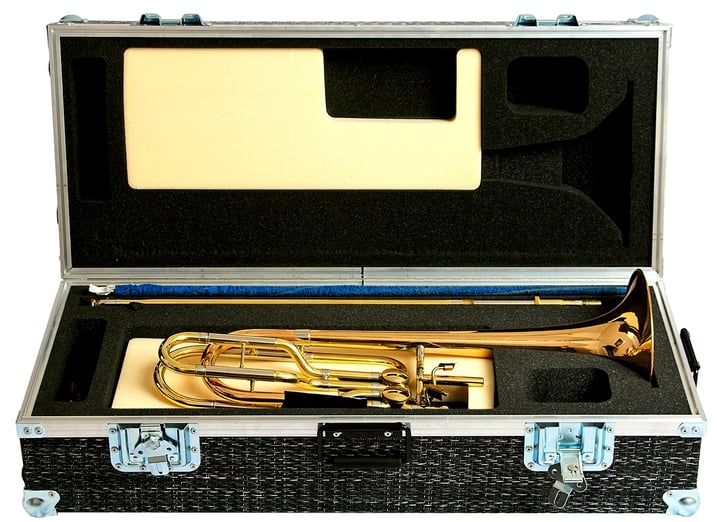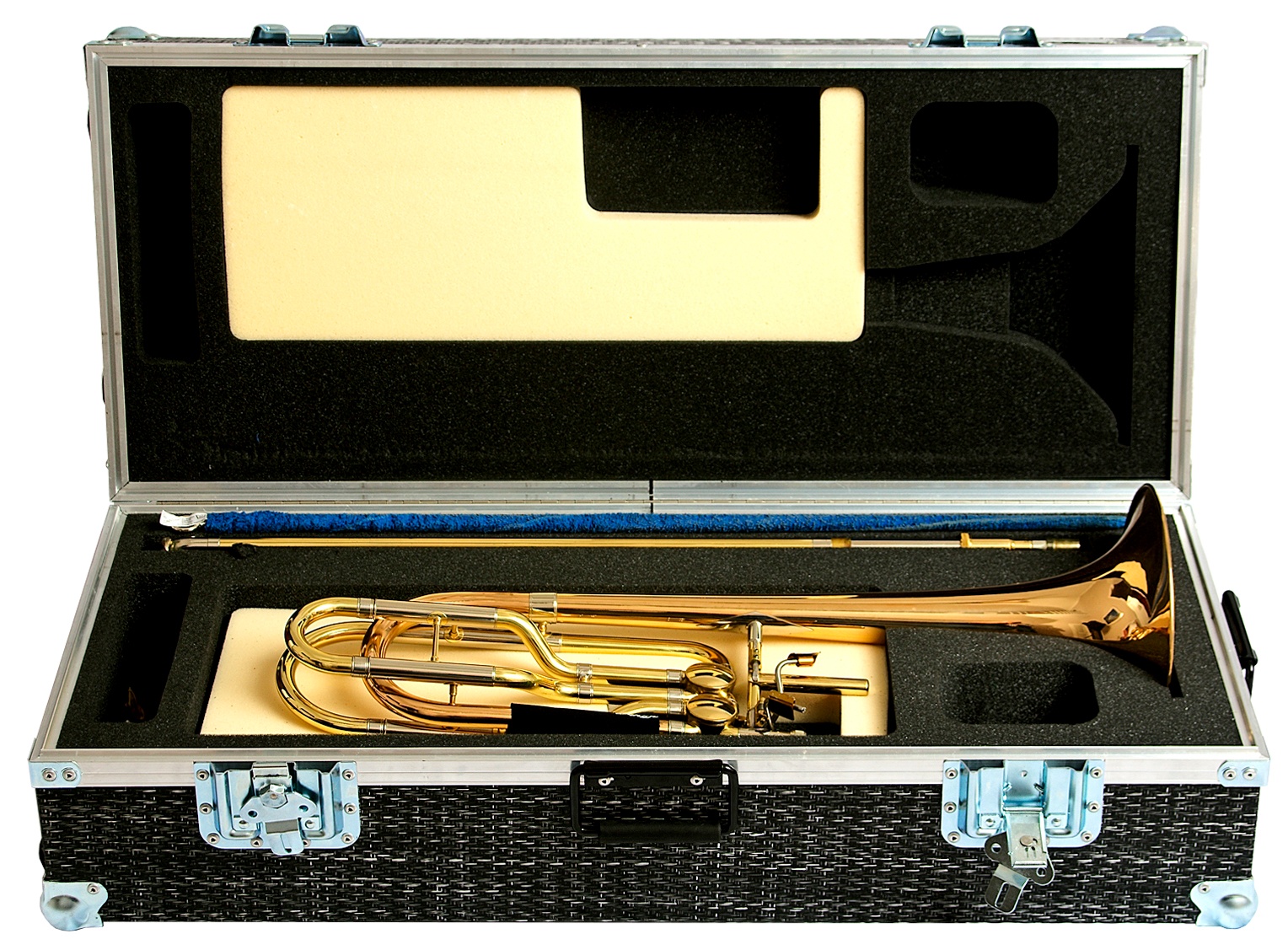Musicians often play the same instrument for so many years that the instrument starts to feel like an extension of themselves. It is no wonder that traveling musicians feel a sense of dread when they have to take their instruments on airplanes. Even before they get on the plane, instruments must go through an inspection process. If the security officers, who handle your instruments, are not careful, they could end up shifting parts of it and changing its signature sound forever. Now, if the hands of a human being can do that much damage, imagine what the sides of an airplane or the force of other bags knocking into your instrument can do when it is checked into airline baggage. Despite the dangers of travel, it is a necessity for some musicians. Here are 13 tips for keeping your precious instrument safe during airline travel
- If your instrument is small enough, carry it on with you.
The best way to ensure your instrument’s safety is to never let it out of your sight. The US Congress seems to agree with me, as they passed the Federal Aviation Administration (FAA) Modernization and Reform Act in 2012. Section 403 of the legislation states, “An air carrier providing air transportation shall permit a passenger to carry a violin, guitar, or other musical instrument in the aircraft cabin, without charging the passenger a fee in addition to any standard fee that carrier may require for comparable carry-on baggage” as long as it fits in the overhead bins or under the airplane seats.
Sound too good to be true? Read the law for yourself here. - There is no such thing as “too early.”
People in the entertainment industry often say:
“Early is on time, on time is late, and late is fired.”
Similarly, you should arrive as early as possible for your flight to ensure that there will be room for your horn on the plane if you plan to carry it on with you. - Check your airline’s boarding policy online.
Some carry-on policies are strictly first come, first serve. However, some airlines ask certain rows of seats to board the plane first, regardless of how early you get in line. We advise visiting seatguru.com to learn the boarding policy of your airline and buy a seat that would board as early as possible to ensure your trumpet gets a spot in the overhead compartments - If it is too big to fit above or below your seat on the plane, buy your instrument its own seat.
The FAA Modernization and Reform Act allows large instruments to be seated on a plane if they are in a hard case, do not exceed 165 lbs. (that includes the weight of the case and anything else inside it), and have nothing in their cases that is against airplane regulations. - Wear your instrument to make it look smaller.
Carrying your instrument on your person can make it appear smaller and help you avoid being told your instrument is too big to be taken on the plane as a carry-on or as a seated passenger. We recommend utilizing cases with shoulder straps, like this Pro-Go gig bag from Gator. - Call your airline and explain your situation.
Even though Congress has formally allowed instruments to be passengers on planes, it would not hurt to confirm your plans with your airline to ensure that your travel day is seamless. - Bring documentation.
No, your tuba does not need a passport, but it’s a good idea to print out Congress’s legislation and your airline’s policies that prove you are allowed to travel with your instrument as a carry-on or a seated passenger. So, if you and your French horn are challenged on the day of your travel, you can whip out US legislation all lawyer-like and get on with your day. - Loosen your strings.
Changing pressures in the airplane can bend or break the necks of your instruments. Same goes for drum heads. Better to re-tune at your destination than to arrive with a broken violin. - If you have to check your instrument, consider getting an insurance policy on it.
Even with the new law, grand pianos will not be allowed to sit next to you on the plane. And even if you were just traveling with your trombone, maybe you don’t want to spend the extra money for another seat. So, you check your musical babies and hopefully, they arrive safe and sound. However, in the tragic event that they don’t, an insurance policy may save you a lot of headache if you have to repair or even replace your instrument. - Do not pack anything hard in your case.
Stuffing your socks in your drum head may actually add a layer of protection and save you some space. But anything hard or sharp in the same case as your instrument could scratch or dent it when the case is moved around by TSA or while in the plane. - If your hard case has a lock, make sure that lock is TSA recognized.
If it’s not, a TSA officer may have to remove it, jeopardizing the safety of your precious cornet. - Add foam to your hard case.
An empty hard case often leaves too much room for your instrument to move around and become damaged. Foam gives your instrument a snug fit, while absorbing the shock of any rough impact. TANK cases feature RecoCell foam with rebounding properties that prevent your instruments from vibrating and creasing from the impact of a fall or rough landing. TANK foam is also custom made for your instrument, so you won’t need to take a knife to it to make sure your tenor sax fits as smoothly as it sounds. - Actually buy a hard case.
Yes, hard cases are more expensive than soft gig bags, but they also offer much more protection. Even if you plan to carry your instrument on with you, traveling with a hard case allows you to check your instrument worry-free as a backup, in case TSA does not let you on the plane with it. Also, FAA Modernization and Reform Act only allows instruments to be seated passengers if they are in hard cases. A hard cases, like a TANK case, is an investment that will save you the heartbreak of getting to your destination with a broken instrument and make checking your trombone worry-free. Even though TANK cases use both shock-diffusing and RecoCell foam to create a Suspension-in-Place for your instrument, they are still a lighter alternative to wooden cases. Plus, they are made by real musicians, who know exactly what you are going through. Click here to read what other musicians thought of TANK.

In many cases, a musican's instrument is the not only the window to her soul, but also the means by which she earns her livelihood. Musicians should spare no expense to keep such an important part of their lives safe and protected from the roughest of conditions. TANK cases give their owners the peace of mind that comes from knowing their instruments' safety is guaranteed—no matter what.
Keep your mind at ease when you travel with your instruments. Click below to browse our exclusive selection of TANK cases.








Leave a Comment